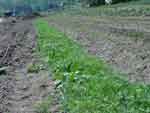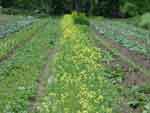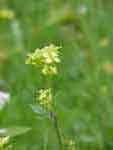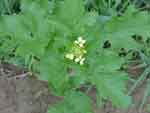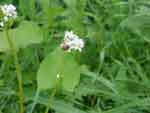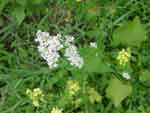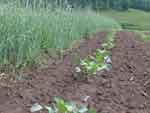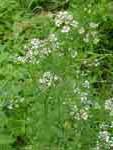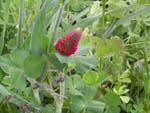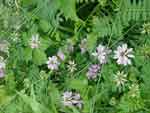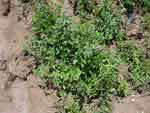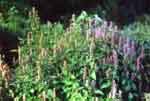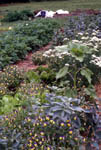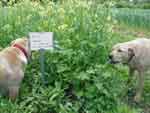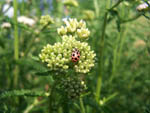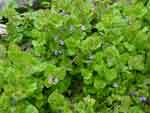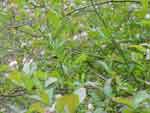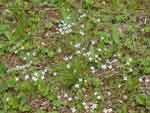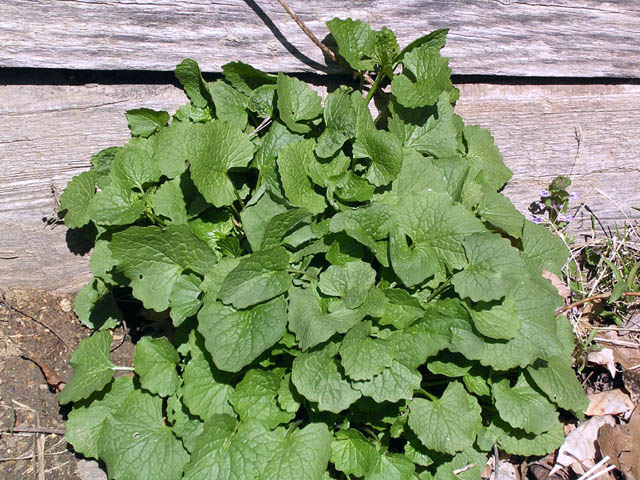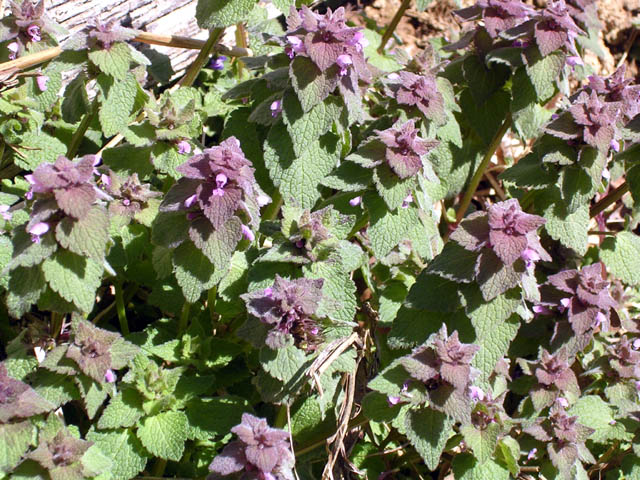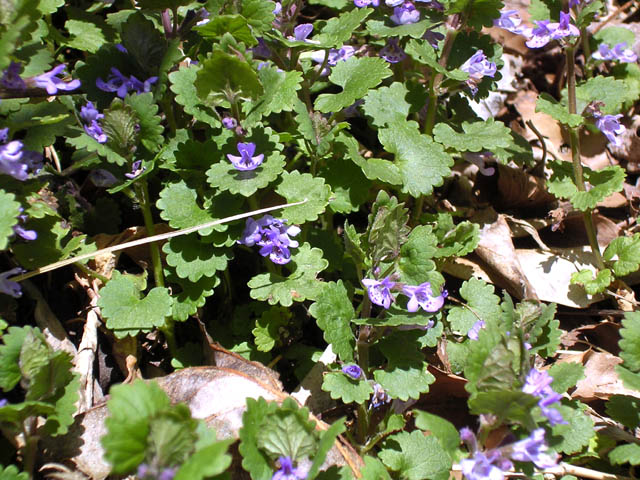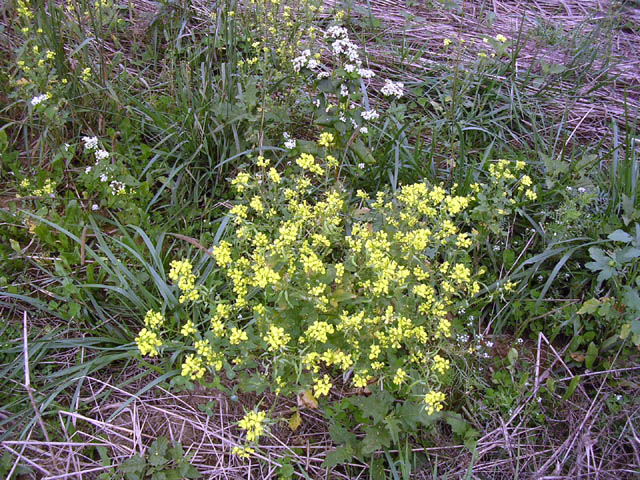SPRING |
SUMMER |
WINTER |
Spring
| Farmscaping rows can take up less than 5% of planted land. Farmscaping can be in filter strips or, as in this case, a pull-out row. This row can be left alone, or partially mowed to disperse beneficials into the crop as needed. | Reference this as an earlier picture of the same farmscaped row mentioned earlier. Even though these plants are low to the ground, they are an important refuge for both the beneficials and their hosts. | Mustards are some of the earliest blooming
flowers that we like to have around in our farmscaping blend. They provide
both nectar and pollen for early ladybugs, like the C7, and for syrphid
fly adults. |
Radishes are another of our very early bloomers
that we encourage. They are an important EARLY source of nectar and pollen,
when not much else is blooming early in the spring. They attract ladybugs,
syrphids, and also parasitic wasps. |
Buckwheat is an important early blooming plant. It provides
pollen for early predators, like this C7 ladybug. Buckwheat can reseed
and you can have blooming plants every 40-50 days or so throughout the
season.
|
| Buckwheat and mustards flowering together in
spring. These two flowers are the favorites of ladybugs and syrphid flies,
so make sure to have them in your early season farmscaping. |
Grains such as rye and winter wheat, as well as oats (oats
usually winter kill), can be used to attract ladybugs. Grains usually
get aphids on them early, which attracts the ladybugs. As the grains dry,
the ladybugs and other beneficials will leave and go to the crop nearby,
in this case, broccoli. |
Coriander or Cilantro is an umbelliferous plant that blooms
early. We find it provides lots of pollen for ladybugs and syrphid flies. |
Legumes such as the Black-Eyed peas shown here have nectaries
for insects that are not associated with flowers (extra-floral nectaries).
Both the flowers and the extrafloral nectaries feed beneficials. |
Here’s a shot of Crimson Clover nestled in with some lettuces and kale. The “larger” clovers like crimson clover, red clover and white clover are better at attracting aphids, which attracts beneficials like ladybugs and syrphids. |
| Vetches, such as the Crown Vetch pictured here, can be an
important source of aphids and other soft-bodied prey for ladybugs and
syrphid flies in our farmscaping. The blooms attract and feed the aforementioned
predators, as well as parasitic flies and wasps. We prefer to use Hairy
Vetch when possible, as it is not as invasive as Crown Vetch can be. |
Red clover is another favorite of ours for farmscaping –
it is a big plant that stays relatively low and supports lots of beneficials,
especially big-eyed bugs in our Xmas tree studies. Remember, the “larger”
clovers like crimson clover, red clover and white clover are better at
attracting aphids, which attracts beneficials like ladybugs and syrphids. |
Mints are early bloomers and as such, they support large
populations of beneficials, from bees to predatory insects to parasitic
wasps. The Anise Hyssop pictured here blooms both in late spring and early
summer. |
Check out the plants in this blend used on potatoes. There
are several plants mixed in, including yarrow, sunflowers, fava beans
(have extrafloral nectaries), and johnny jump-ups, to name a few. By attracting
and maintaining large populations of ladybugs, potato growers can have
fewer Colorado Potato beetles because the ladybugs eat the potato beetle’s
eggs and small larvae. |
End row of farmscaping. Note the mix of plants present.
Plus, dogs love its chewy taste! |
| Yarrow is a composite plant whose flowers are very similar
to those of the Umbels. Yarrow plants are important refuges for various
types of ladybugs, syrphid flys, and minute pirate bugs. |
Ground Ivy is becoming a farmscaping favorite,
due to its early blooms and its coverage. We find it easy to control by
rolling up the ivy mat. Lots of bees and parasitic wasps frequent the
blooms of ground ivy. It blooms both in the spring and fall. This is another
plant that has promise and needs more study. |
Not all farmscaping plants are annuals. The Tulip Poplar
trees attract many important beneficial insects when they bloom. For example
they are a primary food source for the Spring Tiphia wasp, Tiphia vernalis,
which attacks the Japanese beetle grub in the soil. |
Blueberries are another important nectar and
pollen source in the spring. Mainly, we find pollenators like bumble bees,
halictid bees, and carpenter bees on blueberries. |
Although we have not deliberately used wild
garlic or wild strawberries as farmscaping plants, they naturally occur
in our area, and could be an important source of food for early season
natural enemies. Their low growing habits are a plus, too. More work on
these early season plants is needed. |
